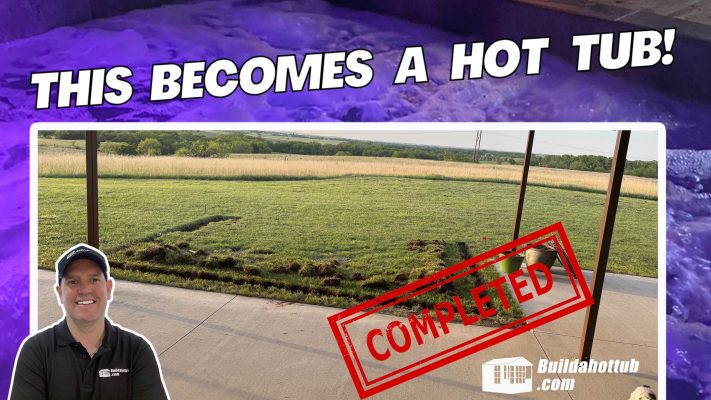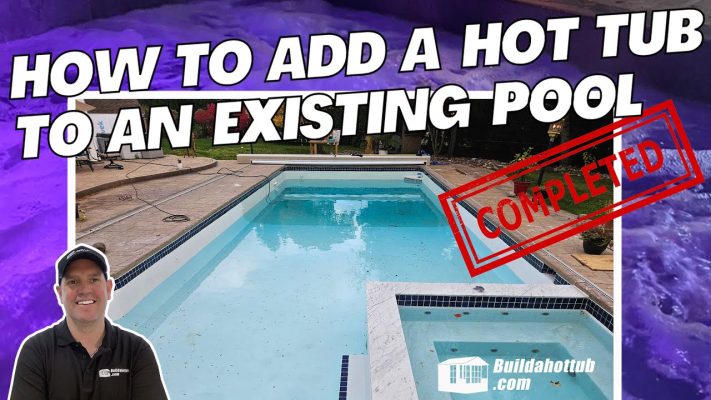In this article, I’m excited to introduce you to Jeffrey and Dave, a talented father-son duo from Tennessee, USA, who are tackling a unique DIY hot tub build.
This project uses insulated concrete form (ICF) blocks, which I thought would make a great video and article for fellow DIYers. So let’s get right into it!
You can also find me on my socials;
Meet Jeffrey and Dave
Jeffrey and Dave had a clear vision for their hot tub and reached out to me for support with designing the plumbing system and supplying the parts. Their chosen location—nestled into a cosy spot down a set of steps—was perfect for a hot tub setup. With some initial plans in hand it was time for me to help them turn this vision into something that is actionable. To do this, they hired me for some custom design consultancy, you can read more about this here.


Building with ICF Blocks
One of the most notable aspects of this build is the use of Insulated Concrete Form (ICF) blocks. ICF blocks, which are essentially expanded polystyrene with built-in insulation and rebar slots, offer a straightforward, sturdy building solution. Think of them as adult-sized Legos—you stack them together, fill them with concrete, and you’ve got a robust, insulated structure.
Benefits of Using ICF
- Enhanced Insulation: Retains heat efficiently, which is perfect for a hot tub.
- Quick Assembly: Stacks easily, significantly cutting down on build time.
- Durability: Ensures a solid structure with minimal risk of cracking.
Step 1: Laying the Foundation
Jeffrey and Dave started with a solid foundation, taking care to ensure the curved front of the tub was in place as shown in the photo below. This foundation serves as the base for the hot tub walls and steps.

Step 2: Building the ICF Structure
Once the foundation was complete, the next step was assembling the ICF block structure. After putting the main blocks in place, they installed the basic plumbing components, including 2.5-inch pipes running through the walls and a return pipe.

Step 3: Setting Up the Control Room
The control room, cleverly tucked under the steps, was insulated to keep the system enclosed and protected from the elements. This space will house the essential controls for the hot tub, maximising functionality while minimising visual impact.

Step 4: Concrete Pour
After months of preparation, it was time for the concrete pour. They opted to have the concrete delivered, which simplified the process. Vibrating the concrete during the pour was crucial to eliminate air pockets, ensuring a solid structure.
Tips for a Successful Pour
- Vibration: Use a vibrating plate or whacker plate to remove air bubbles, achieving a smooth, strong finish.
Separate Pours for Stability: While a mono pour (one continuous pour for walls and floor) can be advantageous, Jeffrey and Dave found that pouring the base slightly elevated inside the ICF blocks was more manageable. A mono pour is typically recommended only if you have someone who’s experience multiple mono pours before.

Curing and Next Steps
With the concrete poured and set, the structure was left to cure. Once curing is complete, Jeffrey and Dave will finish up the plumbing, waterproof the interior, and apply the final surface finish.

Stay Tuned for Updates!
This project is well underway, and there’s still a lot to come! The next stages will involve interior work, finalising the plumbing, and preparing the surface for use. Stay tuned as Jeffrey and Dave bring their dream hot tub to life.
Follow the Project
Check back here for updates, and follow along to see the progress on this impressive DIY build! Whether you’re planning a similar project or just interested in innovative DIY techniques, there’s much more to learn from Jeffrey and Dave’s journey.
Can I Help You?
If I can help you in any way I would love to hear from you. You can get in touch using the form below.
Thanks - Andi
 Hi, Andi here. I own Buildahottub.com and also write all of the articles and info pages on the site. Some years back now, I built my own hot tub but struggled to find the information I needed. So, once my tub was complete, I started this website to help others in their own pursuit of hot tub and plunge pools DIY building information.
Hi, Andi here. I own Buildahottub.com and also write all of the articles and info pages on the site. Some years back now, I built my own hot tub but struggled to find the information I needed. So, once my tub was complete, I started this website to help others in their own pursuit of hot tub and plunge pools DIY building information.
Fast forward to 2025, I've helped over 1400+ DIY customers just like you all over the world build hot tubs and pools. Have a good look around the site, there are lots of resources here. Please do get in touch if I can help you. - Cheers, Andi
















